Table of content
Introduction
Bananas are one of the most popular fruits globally, enjoyed by people across various cultures and dietary preferences. Their sweet taste, creamy texture, and nutritional benefits make them a staple in many diets. However, one common challenge faced by banana lovers is determining when a banana is ripe and ready to eat. While some may prefer their bananas slightly green and firm, others enjoy them fully yellow and soft. This guide aims to provide a comprehensive understanding of how to determine if a banana is ripe, taking into account various factors such as appearance, touch, smell, and even the type of banana.
Understanding Banana Ripening Stages
Before diving into the specifics of how to check if a banana is ripe, it’s essential to understand the different stages of banana ripening. Bananas undergo a series of changes as they mature and ripen, starting from when they are picked on the plant until they are fully ripe and ready for consumption.
Green Stage
When bananas are first picked, they are typically green. This is because chlorophyll, the pigment responsible for green color in plants, is still present in the fruit. At this stage, bananas are not yet ripe and have a firm texture. They may also have a slightly bitter taste if consumed.
Breaker Stage
As bananas begin to ripen, the chlorophyll breaks down, and the fruit starts to change color. Depending on the variety, bananas may turn yellow, red, or a combination of both. This stage is known as the “breaker” stage because it marks the beginning of significant color changes. Bananas at this stage may still be slightly firm but are starting to soften.
Fully Ripe Stage
Fully ripe bananas are typically yellow (or their variety-specific color) and have a softer texture. The skin may have small brown spots, which indicate that the banana has reached peak ripeness. At this stage, bananas are sweet, creamy, and perfect for eating.
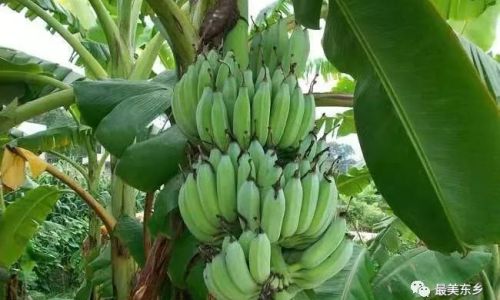
Overripe Stage
If bananas are left on the counter too long, they will continue to ripen and eventually become overripe. Overripe bananas have a very soft texture and dark brown or black spots on the skin. While some people enjoy overripe bananas for baking or smoothies, they are often too soft and mushy to eat raw.
Visual Inspection: The Key to Determining Ripeness
One of the most straightforward methods to determine if a banana is ripe is through visual inspection. Here are some key visual cues to look for:
Color Change
As mentioned earlier, the most obvious sign of ripening in bananas is the change in color from green to yellow (or variety-specific color). While some banana varieties may have red or orange hues, the general rule is that as the chlorophyll breaks down, the fruit’s true color emerges.
Brown Spots
Brown spots on the banana’s skin are a clear indication that the banana has reached peak ripeness. These spots form as the fruit’s natural sugars continue to develop, making the banana sweeter. However, too many brown spots can indicate that the banana is overripe.
Skin Condition
The condition of the banana’s skin can also provide clues about its ripeness. A ripe banana will have a smooth, even skin without cracks or wrinkles. As bananas overripen, the skin may become wrinkled or develop cracks.
Touch: Feeling for Ripeness
While visual inspection is a great starting point, touching the banana can provide additional information about its ripeness.
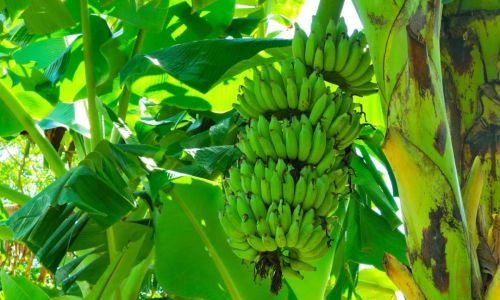
Firmness
At the green stage, bananas are firm to the touch. As they ripen, they become softer. A ripe banana should have a gentle give when pressed but should not feel mushy. If the banana feels too soft or squishy, it is likely overripe.
Consistency
Another thing to consider when touching a banana is the consistency of its skin. A ripe banana will have a slightly tacky or slightly slippery feel due to the natural oils on the skin. This is normal and indicates that the banana is at its optimal ripeness for eating.
Smell: The Aroma of Ripeness
Bananas emit a unique aroma as they ripen. This aroma becomes stronger as the banana reaches peak ripeness and can be another indicator of its readiness to eat.
Sweet Smell
A ripe banana will have a sweet, tropical aroma. This smell is caused by the natural sugars and esters in the fruit that develop as it ripens. If the banana smells strongly of alcohol or has a sour odor, it is likely overripe or spoiled.
Intensity
The intensity of the aroma can also provide clues about the banana’s ripeness. As bananas ripen, the aroma becomes more pronounced. If the banana smells very faint or has no aroma at all, it may not be fully ripe.
Variety-Specific Considerations
It’s important to note that not all bananas ripen the same way. Different varieties have unique characteristics that can affect how they look, feel, and smell when ripe. Here are some common banana varieties and their ripening characteristics:
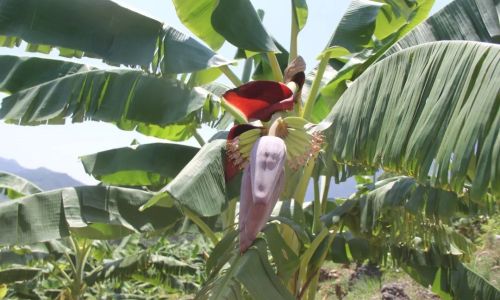
Cavendish Banana
The Cavendish banana is the most commonly consumed banana variety worldwide. It has a bright yellow skin when ripe and develops small brown spots as it overripens. Cavendish bananas have a sweet, creamy texture and a mild tropical aroma.
Plantain
Plantains are a starchier variety of banana, often used in cooking. When ripe, plantains have a yellow-green skin with black spots. They are firmer and less sweet than Cavendish bananas and have a more subtle aroma.
Red Banana
Red bananas have a distinctive red skin with yellow undertones when ripe. They are sweeter and have a creamier texture than Cavendish bananas. Red bananas also have a stronger tropical aroma when ripe.
Burro Banana
Burro bananas, also known as baby bananas or finger bananas, are small and sweet. They have a yellow skin with red tips when ripe and develop dark brown spots as they overripen. Burro bananas have a unique, slightly tangy flavor and a strong tropical aroma.
Storing Bananas to Control Ripening
Understanding how to store bananas can also help you control their ripening process and ensure that you have ripe bananas when you need them.
Room Temperature
Bananas ripen quickly at room temperature. If you want your bananas to ripen faster, place them on the counter in a well-ventilated area. The ethylene gas emitted by bananas accelerates their ripening process, so keeping them in a closed container can speed up the process even more.
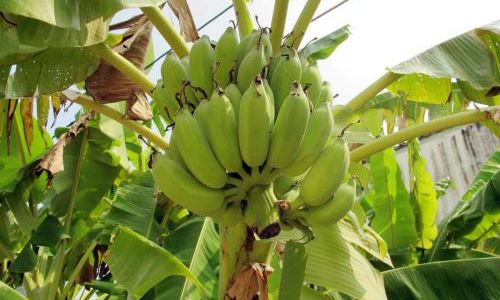
Refrigeration
While refrigerating bananas can slow down their ripening process, it’s not recommended for long-term storage. Cold temperatures can turn the banana’s skin black while the flesh remains firm and underripe. If you must refrigerate bananas, do so for no more than a few days and allow them to warm up to room temperature before eating.
Freezing
Bananas can be frozen for longer-term storage. Peel the bananas, slice them, and place them in a freezer-safe container or bag. Frozen bananas are perfect for smoothies, baking, or making banana ice cream.
Conclusion
Determining if a banana is ripe involves a combination of visual inspection, touch, and smell. By understanding the different stages of banana ripening and considering the unique characteristics of different banana varieties, you can easily identify when a banana is at its optimal ripeness for eating. Proper storage practices can also help you control the ripening process and ensure that you always have ripe bananas on hand. With this comprehensive guide, you’ll never have to guess whether a banana is ripe again. Enjoy your sweet, creamy, and nutritious banana treats!



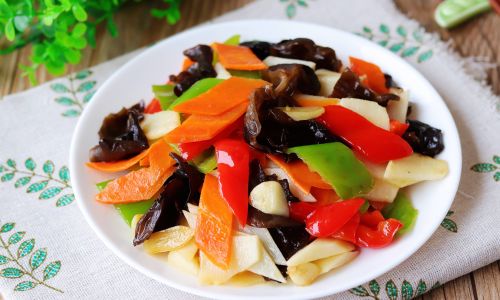
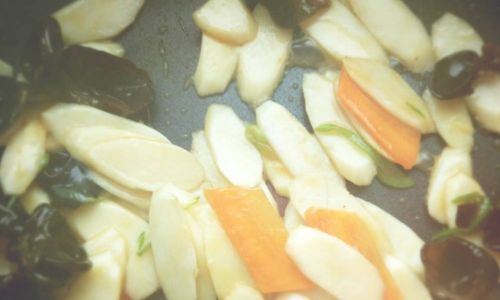
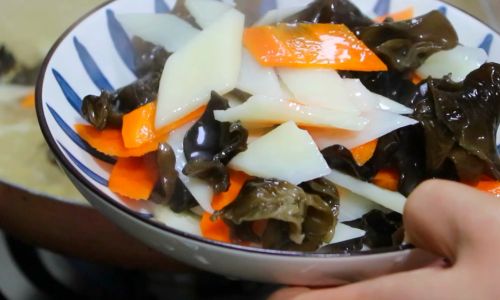
0 comments